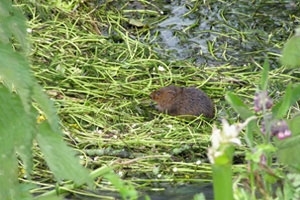 In the early 1960s, when the mink was a new species in Britain and still occurred only in scattered pockets, there was much debate about its likely impacts. The Game Research Association – forerunner of the GWCT – argued in 1961 that this was an extra predator the UK could do without, and urged MAFF to mop them up while it was still possible, for the sake of game and other native wildlife.
In the early 1960s, when the mink was a new species in Britain and still occurred only in scattered pockets, there was much debate about its likely impacts. The Game Research Association – forerunner of the GWCT – argued in 1961 that this was an extra predator the UK could do without, and urged MAFF to mop them up while it was still possible, for the sake of game and other native wildlife.
In subsequent decades, The GWCT’s advisory service gave advice on the control of mink, based both on first-hand experience and on lessons learned from MAFF’s attempted eradication. Mink became a regular feature of gamekeepers’ predator “bags” as reported to the National Gamebag Census, indeed the colonisation of Britain by mink is reflected in NGC data.
Mink are an occasional menace in pheasant release pens, where they can kill large numbers of birds, and this can be a very costly loss. In the main, though, mink have not really proved a major problem in game management. It is their impact on other wildlife species – notably water voles - that has proved the greatest cause of concern.
In 2001, for instance, the UK Water Vole BAP Steering Group declared that: “Without strategic mink control being carried out in combination with habitat enhancement, we will lose the water vole from the vast majority of the British countryside in our working lifetimes.” But it was far from clear what strategic control amounted to.
The GWCT saw this as just another example of predator control to benefit a valued prey species - but also one that challenged the kind of advice we were able to offer. Conservationists needed to know not just how to trap some mink, or a particular problem mink, but how to trap enough mink to allow water voles to persist.
The ability of lethal control to make any difference was questioned, given that the trapped areas were likely to be small, and one could expect reinvasion by mink from surrounding areas. Was there a best time of year to trap mink? Were water voles vulnerable all year round? Did the local eradication of mink have to be perfect?
The same questions arise in all predator control, and we didn’t have clear answers. But in this case the need for advice coincided with a novel idea about how to generate that advice.
Get the Latest News & Advice
Join over 100,000 subscribers and stay updated on our latest advice, research, news and offers.
*You may change your mind any time. For more information, see our Privacy Policy.